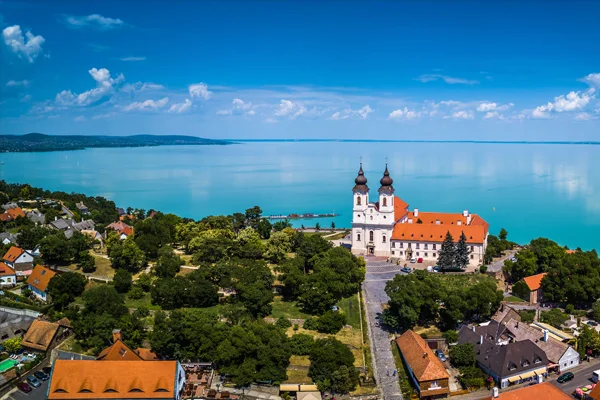Lake Balaton continues to evolve as a multifaceted destination
With increasing investments in infrastructure, cultural tourism, and eco-friendly initiatives, the lake is poised to maintain its status as both a natural sanctuary and a modern holiday hotspot.

Lake Balaton, located in western Hungary, is the largest freshwater lake in Central Europe and one of the most cherished natural treasures in the country. Often referred to as the “Hungarian Sea,” Lake Balaton has been a cultural, historical, and recreational hub for centuries. Its scenic landscapes, diverse wildlife, rich history, and vibrant tourism industry make it an indispensable part of Hungary's national identity.
Geographical Overview
Lake Balaton stretches approximately 77 kilometers (48 miles) from northeast to southwest, with a surface area of about 592 square kilometers (229 square miles). The lake’s width varies from 4 to 14 kilometers (2.5 to 8.7 miles), and its average depth is relatively shallow at just 3.2 meters (10.5 feet), with the deepest point reaching 12.5 meters (41 feet) near the Tihany Peninsula.
- Location:Transdanubian region of Hungary
- Inflow: Zala River
- Outflow: Sió Channel
- Main cities around the lake: Siófok, Keszthely, Balatonfüred, Tihany, Badacsony
Historical and Cultural Significance
Lake Balaton has long been a symbol of relaxation and rejuvenation. Archaeological evidence suggests that human settlements have existed around the lake since prehistoric times. During Roman times, the area formed part of the province of Pannonia, and remains of Roman villas and bathhouses have been discovered in the region.
In the 19th and early 20th centuries, the lake became increasingly popular among the Hungarian aristocracy and intellectual elite, including writers, poets, and artists. This era saw the development of grand villas, promenades, and cultural institutions, especially in towns like Balatonfüred and Keszthely.
Natural Beauty and Ecosystem
Lake Balaton is surrounded by diverse natural environments: rolling hills, vineyards, volcanic basalt mountains, wetlands, and sandy beaches. The Balaton Uplands National Park, on the northern shore, encompasses unique geological formations and habitats including:
- Tihany Peninsula: A geological and historical gem with volcanic hills, geyser cones, and the Benedictine Tihany Abbey, established in 1055.
- Badacsony: A former volcanic mountain known for its basalt cliffs and excellent vineyards.
- Kis-Balaton (Little Balaton): A protected wetland area and bird reserve that serves as a key stopover for migratory birds.
The lake's shallow depth and warm temperatures (reaching up to 26°C/79°F in summer) make it an ideal habitat for a variety of aquatic life, including pike, perch, carp, and catfish.
Tourism and Recreation at Lake Balaton
Lake Balaton is Hungary’s premier domestic travel destination, attracting millions of visitors each year. It is popular for family vacations, wellness tourism, water sports, wine tasting, and cultural events.
Popular Activities at Lake Balaton
- Swimming and sunbathing: Especially in towns like Siófok, known for its vibrant beach scene.
- Sailing and boating: Thanks to the lake’s size and favorable wind conditions.
- Cycling: The 200-kilometer Balaton Bike Ring encircles the lake, offering stunning views and easy access to local attractions.
- Hiking: Numerous trails around the Balaton Uplands and Tihany Peninsula.
- Wine tourism: The Balaton region is known for its white wines, especially those from the Badacsony, Balatonfüred-Csopak, and Balatonboglár wine districts.
Cultural Events around the Lake Balaton
- Balaton Sound: One of Europe’s biggest electronic music festivals, held in Zamárdi.
- Anna Ball (Anna-bál): A traditional Hungarian ball held in Balatonfüred since 1825.
- Wine Festivals: Annual festivals in various towns celebrate the harvest and regional wines.
Economic and Social Impact
Lake Balaton plays a significant role in the Hungarian economy, particularly in the areas of tourism, agriculture, viticulture, and real estate. Its tourism infrastructure includes hotels, campgrounds, spas, and marinas, supporting tens of thousands of jobs.
In addition, the lake and its surroundings are vital for local agriculture, especially vineyards that benefit from the favorable microclimate and mineral-rich volcanic soil.
